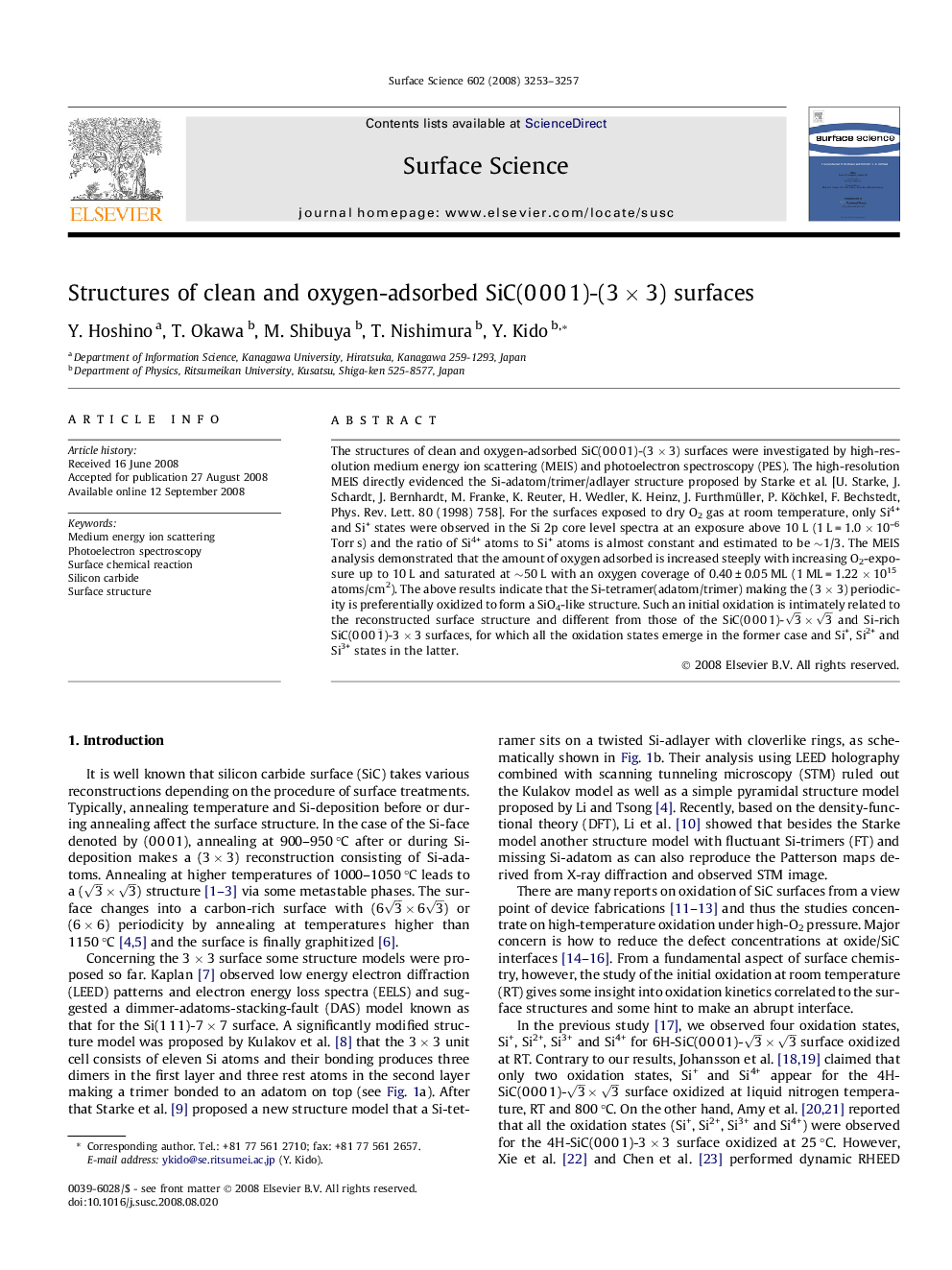| Article ID | Journal | Published Year | Pages | File Type |
|---|---|---|---|---|
| 5424596 | Surface Science | 2008 | 5 Pages |
Abstract
The structures of clean and oxygen-adsorbed SiC(0 0 0 1)-(3 Ã 3) surfaces were investigated by high-resolution medium energy ion scattering (MEIS) and photoelectron spectroscopy (PES). The high-resolution MEIS directly evidenced the Si-adatom/trimer/adlayer structure proposed by Starke et al. [U. Starke, J. Schardt, J. Bernhardt, M. Franke, K. Reuter, H. Wedler, K. Heinz, J. Furthmüller, P. Köchkel, F. Bechstedt, Phys. Rev. Lett. 80 (1998) 758]. For the surfaces exposed to dry O2 gas at room temperature, only Si4+ and Si+ states were observed in the Si 2p core level spectra at an exposure above 10 L (1 L = 1.0 Ã 10-6 Torr s) and the ratio of Si4+ atoms to Si+ atoms is almost constant and estimated to be â¼1/3. The MEIS analysis demonstrated that the amount of oxygen adsorbed is increased steeply with increasing O2-exposure up to 10 L and saturated at â¼50 L with an oxygen coverage of 0.40 ± 0.05 ML (1 ML = 1.22 Ã 1015 atoms/cm2). The above results indicate that the Si-tetramer(adatom/trimer) making the (3 Ã 3) periodicity is preferentially oxidized to form a SiO4-like structure. Such an initial oxidation is intimately related to the reconstructed surface structure and different from those of the SiC(0 0 0 1)-3Ã3 and Si-rich SiC(0001¯)-3 Ã 3 surfaces, for which all the oxidation states emerge in the former case and Si+, Si2+ and Si3+ states in the latter.
Keywords
Related Topics
Physical Sciences and Engineering
Chemistry
Physical and Theoretical Chemistry
Authors
Y. Hoshino, T. Okawa, M. Shibuya, T. Nishimura, Y. Kido,
